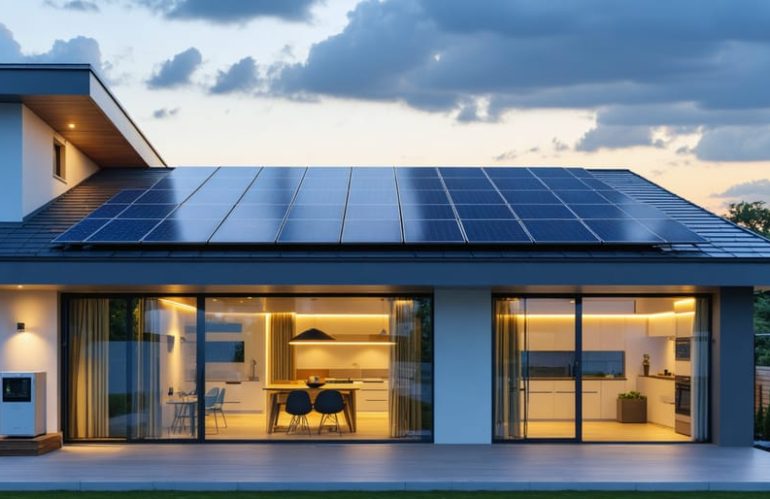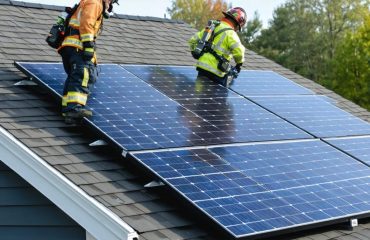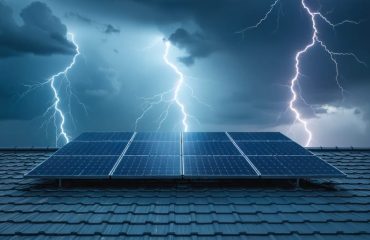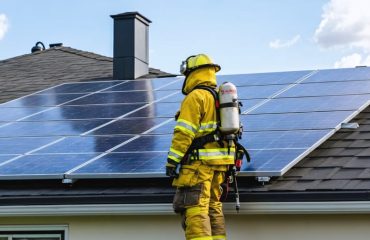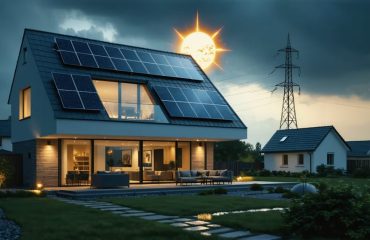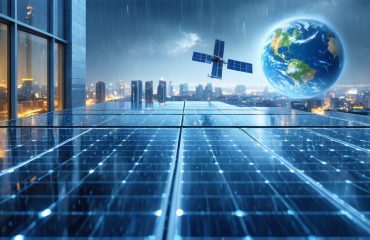Solar energy has evolved far beyond its unpredictable reputation of the past. Modern solar systems, equipped with advanced battery storage and smart monitoring technology, now provide consistent, reliable power throughout the year. While it’s true that solar panel output varies with weather conditions and seasonal changes, today’s sophisticated energy management systems effectively balance these natural fluctuations, ensuring steady power supply even during cloudy days or nighttime hours.
For homeowners considering solar installation, the key question isn’t whether solar energy is unpredictable, but rather how to optimize its predictability. Advanced weather forecasting, coupled with AI-driven power management systems, allows households to anticipate and adapt to changing conditions. Real-world data shows that properly designed solar systems consistently meet or exceed homeowners’ energy needs, with many achieving 95% or higher reliability rates when combined with battery storage solutions.
This shift from intermittent to dependable power generation represents one of the most significant advances in residential solar technology, making it a increasingly reliable choice for home energy independence.
The Truth About Solar Energy Predictability
Weather Patterns and Solar Production
Modern weather forecasting technology has made solar energy production more predictable than ever before. Meteorologists can accurately forecast sunshine patterns days in advance, allowing homeowners and utility companies to plan their energy usage effectively. Solar monitoring systems use these weather predictions along with historical data to estimate daily and weekly energy production with impressive accuracy.
Think of it like planning for a picnic – while you can’t control the weather, you can reliably predict it and plan accordingly. Solar systems work the same way, with the added advantage of sophisticated monitoring tools that track production patterns throughout the year. Even on cloudy days, solar panels continue to generate electricity, though at a reduced capacity.
Many solar installations now come with smart monitoring apps that provide real-time production forecasts based on local weather data. These tools help homeowners understand when they’ll have peak production periods and when to expect lower output, making it easier to adjust energy usage habits. This predictability, combined with battery storage solutions, ensures a stable and reliable power supply regardless of weather variations.
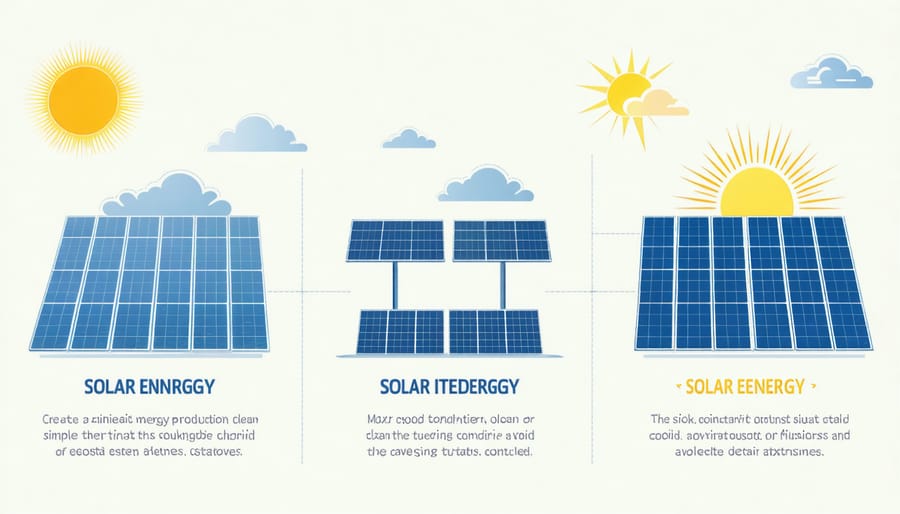
Advanced Solar Technology Solutions
Modern solar technology has evolved significantly, making solar energy more reliable and predictable than ever before. Advanced solar panels now incorporate sophisticated tracking systems that automatically adjust their position throughout the day to maximize sunlight exposure. Smart inverters and monitoring systems provide real-time data about energy production and consumption, allowing homeowners to optimize their usage patterns.
Battery storage solutions, like Tesla Powerwall and similar systems, have revolutionized how we protect your solar investment and ensure continuous power supply. These batteries store excess energy produced during sunny periods for use during cloudy days or nighttime, effectively eliminating the unpredictability factor.
Weather forecasting integration with solar systems has also improved dramatically. Modern solar installations can now predict energy production based on weather patterns, allowing homeowners to plan their energy usage accordingly. Additionally, micro-inverter technology ensures that if one panel’s performance is affected by shade or debris, the entire system continues to operate efficiently, maintaining consistent energy production throughout the day.
Emergency Preparedness with Solar Backup
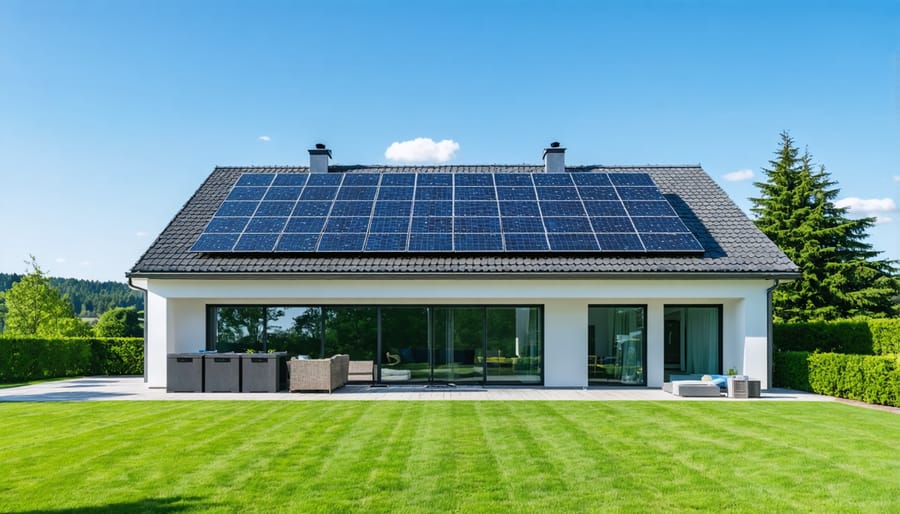
Battery Storage Systems
Battery storage systems are the game-changing solution that makes solar energy reliable and predictable, even during power outages. These advanced systems store excess energy produced during sunny days, allowing you to keep your home running smoothly when the sun isn’t shining or during grid failures.
Modern solar batteries, like the popular lithium-ion systems, can power essential appliances for hours or even days, depending on your setup and energy usage. During an emergency, you can count on your stored energy to maintain critical systems like refrigeration, lighting, and medical equipment.
The beauty of battery backup systems lies in their automatic operation. When the grid goes down, the switchover to battery power happens instantly, ensuring uninterrupted power to your home. Many systems also come with smart features that let you monitor and manage your energy usage through smartphone apps, giving you complete control over your power consumption.
For maximum reliability, you can customize your battery capacity based on your specific needs. Whether you want basic emergency backup or complete energy independence, today’s storage solutions offer the flexibility to match your goals and budget while providing peace of mind during uncertain times.
Smart Energy Management
Modern solar energy systems incorporate sophisticated energy management features that make them remarkably reliable during emergencies. Smart inverters and advanced battery systems work together to prioritize essential loads, automatically directing power to critical appliances like refrigerators, medical equipment, and emergency lighting when needed.
These systems continuously monitor energy production, storage levels, and consumption patterns. During normal operation, they learn your household’s energy habits and adjust accordingly. When severe weather or grid outages occur, the system automatically switches to emergency mode, implementing pre-set protocols to extend battery life and maintain power to crucial circuits.
Many smart solar setups now include weather forecasting integration, allowing them to prepare for upcoming periods of reduced sunlight by storing extra energy. They can also communicate with smart home devices to reduce non-essential power usage during emergencies, ensuring stored energy lasts longer.
Backup power management has become increasingly sophisticated, with some systems capable of powering homes for several days during outages. They can even coordinate with local utilities during grid emergencies to provide support to the broader community while maintaining household power security.
For additional peace of mind, many modern systems offer mobile app monitoring, allowing homeowners to track their system’s performance and make real-time adjustments to their energy usage, even during emergency situations.
Real-World Performance During Emergencies
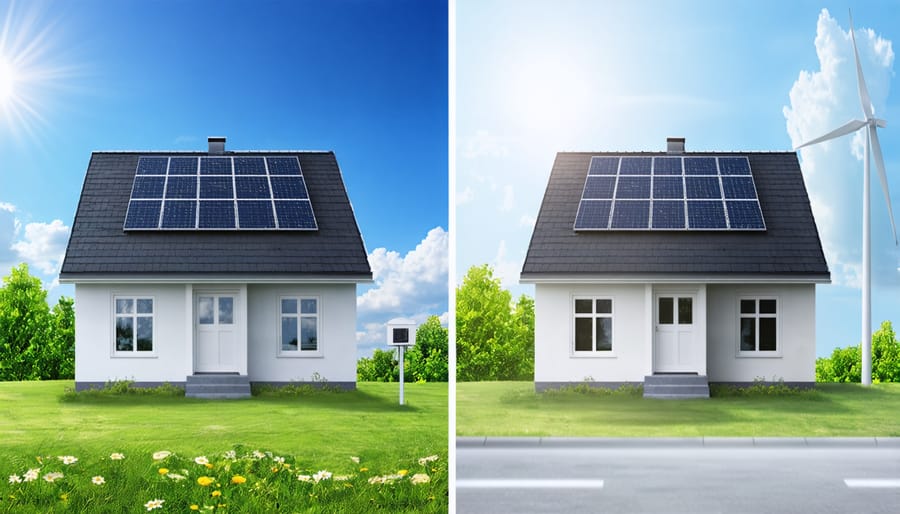
Success Stories
During Hurricane Sandy in 2012, John and Sarah Martinez’s solar-powered home in New Jersey remained operational while their neighborhood experienced a week-long blackout. Their battery backup system, charged by solar panels, kept essential appliances running and even helped neighbors charge their phones.
In California, the Wilson family’s solar setup proved invaluable during the 2019 wildfire-related power shutoffs. Their solar panels and storage system powered their home for four days, maintaining refrigeration for medication and running vital medical equipment for their elderly parent.
The Colorado Mountain School’s solar installation demonstrated remarkable resilience during a severe winter storm in 2020. Despite heavy snowfall, their properly tilted panels shed snow efficiently and continued generating power, keeping emergency communications and heating systems operational.
A Florida community solar project showed its worth during Hurricane Irma, powering a local shelter for three days. The system’s reinforced mounting survived 120mph winds, providing electricity for emergency lighting, communication equipment, and basic medical devices.
These real-world examples highlight how modern solar technology, when properly installed and maintained, can provide reliable power during critical situations, offering both independence and peace of mind.
Lessons Learned
Real-world experiences have taught us valuable lessons about solar energy’s reliability during emergencies. During natural disasters and grid failures, many homeowners with solar installations have maintained essential power while their neighbors faced blackouts. The key lesson is that proper system design and backup storage are crucial for maximizing solar reliability.
When homeowners prepare for extreme weather events, those with solar systems often fare better than those without. Hurricane Sandy in 2012 demonstrated this when numerous solar-powered homes maintained electricity while the grid was down. Similarly, during California’s rolling blackouts, solar-equipped homes with battery storage continued to power essential appliances.
Another crucial insight is the importance of regular maintenance and monitoring. Systems that receive consistent care perform more predictably and efficiently. Homeowners who track their system’s performance can better anticipate energy production patterns and adjust their usage accordingly.
Perhaps the most significant lesson is that solar reliability depends more on proper planning than weather conditions. With today’s advanced technology and storage solutions, solar power has proven to be a dependable energy source when implemented correctly.
While solar energy does have natural variations, modern technology and proper system design make it a highly reliable source of power, especially during emergencies. With battery storage systems, smart monitoring, and professional installation, homeowners can count on their solar setup to deliver consistent energy when they need it most. The predictability of solar power has improved dramatically over the past decade, making it an excellent choice for emergency preparedness.
By investing in a solar energy system today, you’re not just reducing your carbon footprint and energy bills – you’re also securing your home’s energy independence for the future. The key is working with qualified professionals who can design a system that matches your specific needs and location.
Take the first step toward energy security by scheduling a solar consultation with a certified installer. They can assess your home’s solar potential and recommend the right combination of panels and battery storage to ensure you have reliable power, come rain or shine. Don’t wait for the next power outage to wish you had made the switch to solar – start planning your sustainable energy future today.

